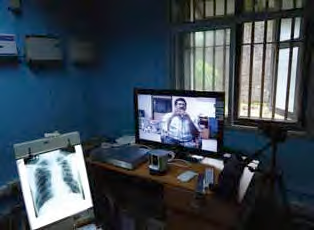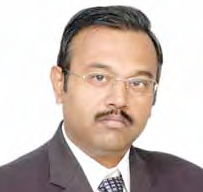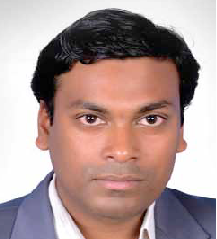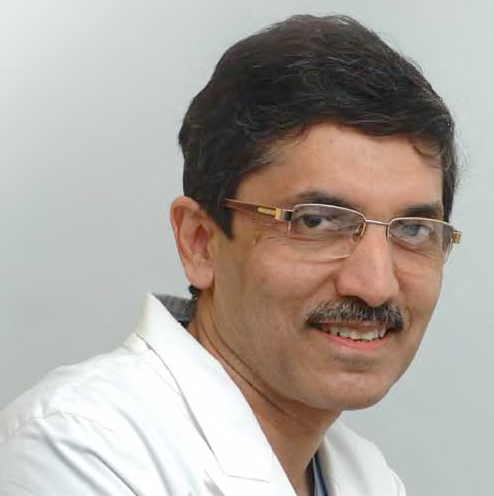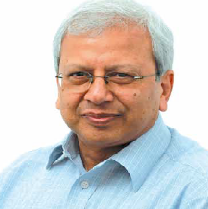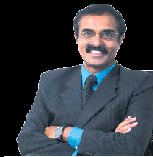The Classic Case of Aarogyasri
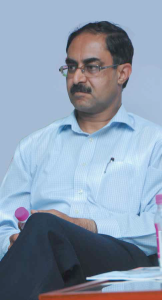 The Andhra Pradesh Government has undertaken several initiatives for delivering quality healthcare to its citizens. Several new schemes have been launched, says Ajay Prakash Sawhney, Principal Secretary, Department of Health, Medical and Family Welfare, Government of Andhra Pradesh. In conversation with Mohd Ujaley, ENN
The Andhra Pradesh Government has undertaken several initiatives for delivering quality healthcare to its citizens. Several new schemes have been launched, says Ajay Prakash Sawhney, Principal Secretary, Department of Health, Medical and Family Welfare, Government of Andhra Pradesh. In conversation with Mohd Ujaley, ENN
You have been serving in many different departments. How has your experience been as an IAS officer?
Experience has been very nice, but it is not a singular job. Every few years we are posted in a new job so it becomes a new challenge. We have to learn the new assignment, understand the major issues and then implement sufficient measures for the growth of the sector. I have worked earlier as the deputy secretary medical and health department AP Government. So it is good to be back into this sector and reacquaint myself with this department.

During the last few years, Andhra Pradesh has emerged as a major IT hub. Several initiatives have been taken to improve governance through the use of ICT. Where do you place the health department in terms of using ICT?
Earlier there were only 27 mission mode projects under the National e-Governance Plan, and health sector was not being covered. But now we are covering both education and healthcare. Within Andhra Pradesh there have been many initiatives to implement ICT. In fact, we have implemented ICT quite well in Aarogyasri. It is a very unique scheme and it has more than 100 hospitals, including government and private, which are networked together. Every single Aarogyasri case that goes to the hospital is tracked electronically and once the diagnosis is done a preauthorisation letter is taken from the Aarogyasri trust for going ahead with surgical or other procedures. That is one of the major areas where ICT is being used and we can build upon that in many ways. Aarogyasri trust uses ICT for almost all other activities. So this is a model scheme for us which encourages us to take up ICT in all the other verticals as well.
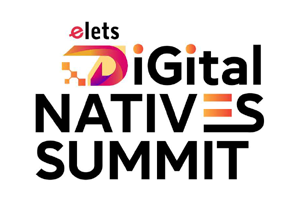
Tell us about the mandate of the Aarogyasri programme? What kind of impact is the scheme having on the ground level?
Aarogyasri has been a pioneering programme; it empowers the poor people to use those medical services which they otherwise cant afford. Young children who are born with hearing impairment have benefited from this programme where a cochlear implant has actually helped them avoid deafness. This kind of implant is unimaginable for poor person, but under Aarogyasri programme it is possible. Around 83 percent of the population is covered under the Aarogyasri programme where they are delivered free of cost treatment. So this has become a model scheme for other states as well. Though Aarogyasri has attracted a lot of criticism, still it has managed to full the requirements of a large percentage of the population.
How can the health department overcome the issue of Anaemia and other health related issues that many poor people in the state are facing?
There are three sectors where we have taken adequate steps. One is reduction in the maternal mortality ratio, second infant mortality rate and third is malnutrition. Last year a new programme was launched by the name Marpu, which means change. Through this scheme we are trying to bring about major change in the manner of which we tackle these change. So health, women and child development and self-help group at the field level have come together to address these issues. So under Marpu, 20 interventions have been taken up, starting with early registration of each pregnancy, identification of high risk cases and also the anti natal check-ups. Taking care of maternal nutrition, birth planning, early initiation of breast feeding, entire cycle of immunisation, post natal care, immunisation against acute respiratory infection are some of the key features of Marpu.

Which are the new initiatives in the health sector that you are planning to come up with?
There are six different areas that we are currently working on. Major one is strengthening of MCTS which will happen in collaboration with other departments. We also want to equip the AMNs with devices which will report the service deliver activities closer to real time. If we use mobile technology then it will help us to capture data in more real time and help us look at the shortcomings and help us improvise. So MCTS has to be enhanced as a package in itself. We have to provide linkages with other departments as well where the convergence between anganwadis and health activities can happen more effectively. We can also use the services of the local self-help groups in addressing the issues. The second major area that we are looking at is implementation of ICT inside hospitals. We have looked at examples elsewhere in the country, keeping that in mind we have prepared a pilot programme which will be implemented in few of the hospitals with comprehensive e-hospital kind of a package. Along with this we are also looking at the supply chain of medicines and equipment which are required in a hospital. The fourth factor is use of IT in human resources. The fifth area that we have identified is the court cases, managing the legal cases effectively and the sixth area is paramedical education and tapping the institutions offering courses in paramedical education.

Most young doctors do not enjoy the prospect of having to serve in the rural areas. How do you plan to tackle the issue of MBBS doctors not opting for rural areas?
The Southern States are in a slightly different position. In Andhra Pradesh we have almost 41 medical colleges and each year there are more than five thousand doctors graduating as MBBS. In the PG level also we have significant capacity. The step which government has taken is that in case of MBBS it is mandatory for the fresh graduates to serve in a rural area and for specialists to serve in a government hospital. We are also training the paramedic staff for delivering efficient healthcare and in most circumstances it has proved to be fruitful. Under NRHM also we are trying to address this issue.
uld_count:
Cookie not set
Value 1: 0
Value 2: 10





